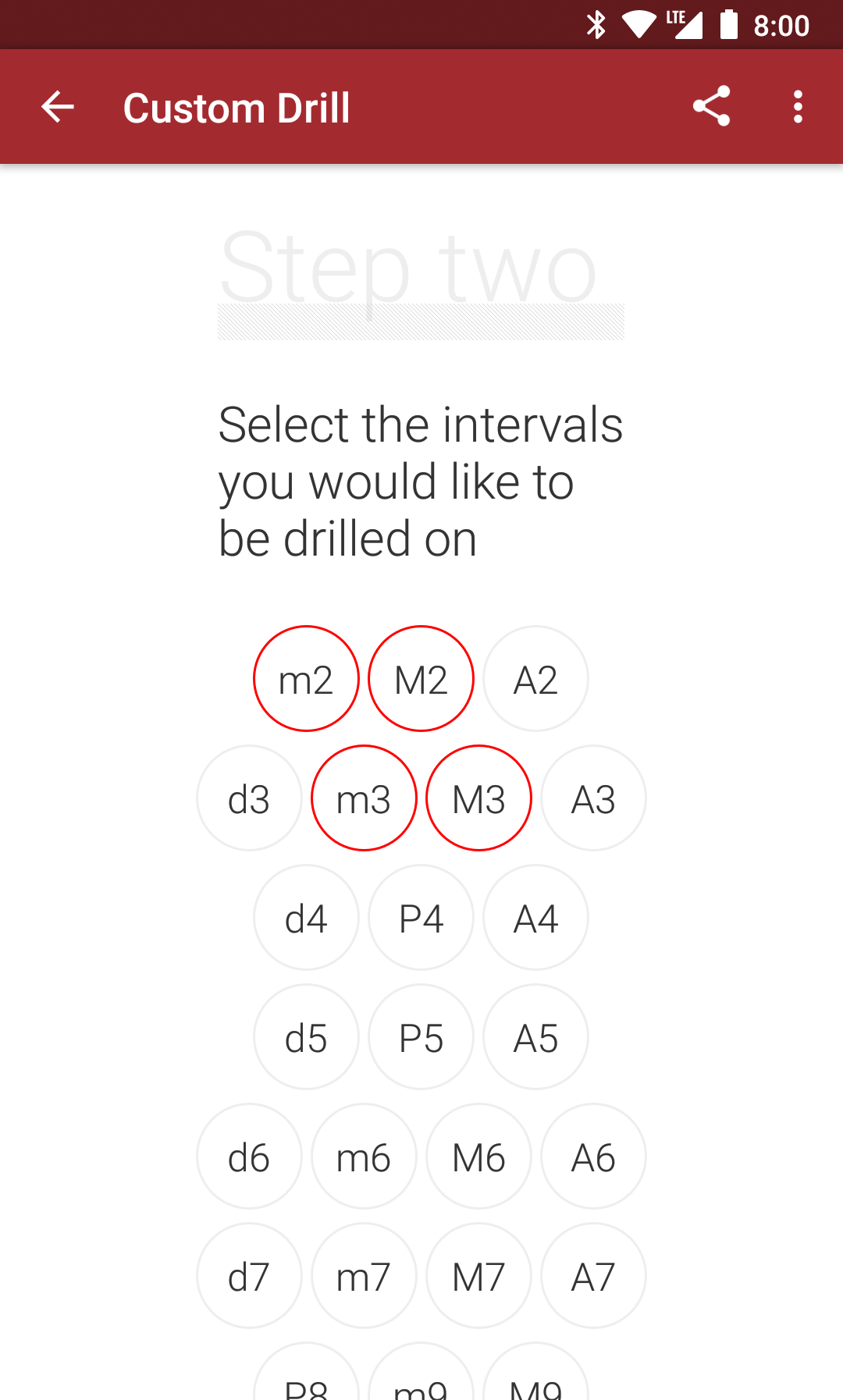

You get used to the movement, get your technique right - and then you start gradually upping the weights you lift. We don’t walk into the gym and start lifting the heaviest weight! We start with the weight that is almost too easy that we wonder why we’re bothering with it…

If you were to tackle everything in one go then yes it would be difficult. We need to get out of our comfort zone and go do a real-life activity that will challenge our body in different ways - it’s the same with our ears. In order to strengthen your ability to hear & identify all those elements, you need to train.Īs with any sort of training, this is about repetitive exercises that get gradually more difficult over time.Īnother important aspect of your ear training is to step outside of the repetitive exercises and use your listening skills in a real-life situation - ie, figuring out a song (or parts of it).Īgain this correlates with any physical training of the muscles, we can’t simply repeat stuff all the time or our muscles will become too accustomed to those exercises and our progress will stagnate. I’m here to tell you that though it is important, solfege and learning to sing & identify intervals is only the beginning. So if you have learned solfege in the past, or if you’ve heard about it and thought that was the complete path to playing by ear … Recognise chord progressions - cutting down the workload of chord-by-chord analysis and making the process even faster! Recognise patterns - without it we’d need to figure out hundreds, maybe thousands of notes within a song instead of simply identifying patterns and remembering them. Recognise rhythms - so that we can play melodies and riffs faithfully without needing notation. Recognise pitches that are played together - the chords! Playing by ear isn’t just about intervals of separate notes going up or down, that only deals with the pitches in the melody - and that’s not a whole song! How does ear-training help me to play by ear?

There is much more required in playing by ear - which you would have gathered if you’ve already learned solfege, but still can’t figure out a song! What a relief that Solfege helps with that specific part of training the ear!
EAR TRAINER HOW TO
This trains our ear to recognise intervals - which is handy because there are 12 of them.Īnd we not only need to know how to identify intervals going up, but also going down! This is where most ear-training programs will focus - it is why the great technique ‘solfege’ is used (think The Sound of Music ‘Doe a Deer’ song, lyrics and all).
EAR TRAINER FULL
Homework assignments entail full or partial transcriptions of rhythmic and melodic elements, as well as exercises involving melodic solfege and rhythmic recitation designed to enhance a student's internal sense of time, pitch, and physical independence through singing or speaking of melody and rhythm in the context of its underlying essential metrical structure.One of the parts of ear-training is to decipher where notes are in relation to each other - this is called ‘relative pitch’ and is super important to playing by ear. Students examine music from the perspective of musical cognition, including the potential impact of cultural background on the formation of one's mental representation and the analysis of ambiguous musical structures. In-class activity includes vocalization and rhythmic externalization exercises based on particular musical examples, general listening and aural analysis, and transcription of selected elements of a musical texture. This course focuses on a variety of rhythmic patterns, percussive ostinatos, and melodic repertoire from around the world, with an emphasis on African, Caribbean, and South American traditional and popular music, as well as South Indian classical, Balkan, and Middle Eastern genres.


 0 kommentar(er)
0 kommentar(er)
